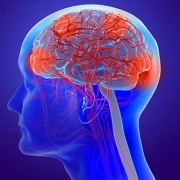ESJ Comment: Is hospital diagnostic coding accurate enough for big data research?
Routinely collected administrative hospital diagnostic coding data are widely used for outcome audit and big data research, including studies on time-trends of stroke incidence and outcome. The results of these studies are therefore influenced by the accuracy of hospital coding. In particular, studies on temporal trends are biased by changes in coding quality over time. In view of the widespread use of coding data for large-scale epidemiological studies on determinants of stroke, the validation of administrative coding is a cornerstone to ensure research quality.
In a population-based study, Linxin Li and colleagues used data from the Oxford Vascular Study (OXVASC) to analyse trends in sensitivity and positive predictive value (PPV) of hospital diagnostic codes for identifying acute stroke from 2002 to 2017. The results showed that 1341 of 1883 (71.2%) hospitalised strokes were correctly identified by coding, with a significant increase in sensitivity over time. Similarly, the positive predictive value (PPV) of administrative hospital coding of acute stroke cases improved significantly in the last 15 years. With appropriate selection of stroke-specific codes and inclusion of only first admission strokes, PPVs > 90% can be achieved, which would be adequate for large-scale epidemiological studies. However, despite improvement over time, hospital coding still lacks sensitivity. For instance, one fourth of hospitalized stroke cases and even half of all incident stroke cases would have been missed, if no additional ascertainment sources had been used. In consequence, the lack of sensitivity does not support the use of coding data alone for incidence estimates.
The authors conclude that approaches to improve coding accuracy are still required and future studies should address the impact of additional linking to primary care data and other sources in large epidemiological studies.
The full text of the article “Temporal trends in the accuracy of hospital diagnostic coding for identifying acute stroke: A population-based study” is available in the upcoming fourth issue of the European Stroke Journal. It is really worth reading!





